
Pigmentation Treatment
What Is Pigmentation?

The various dark or fair tones of human skian are caused by the concentration and distribution of a single pigment, eumAelanin, produced by special cells of the skin called melanocytes. Pigment cells are located in the basal layer of the epidermis. Their number is about the same in all people – regardless of “skin color” and origin. The reason for the differences lies in the different activities of the pigment-forming cells.
Environmental factors such as UV rays triggers the skin to produce melanin, giving the appearance of a darker tan to protect it from sun damage. However, prolong exposure to UV rays can cause micro damages to the skin, triggering uneven production of melanin which causes spots commonly referred to as pigmentation. Other factors such as hormonal changes, medication or aging can also contribute to pigmentation. The extent to which this occurs and the degree of skin pigmentation present with sunlight exposure are predominantly genetically determined.
Undesirable Pigmentation Issues

The Most Common Types Of Pigmentation
In Singapore and most places around the world, the most prevalent types of undesirable pigmentation include:
Melasma:

Sunspots:
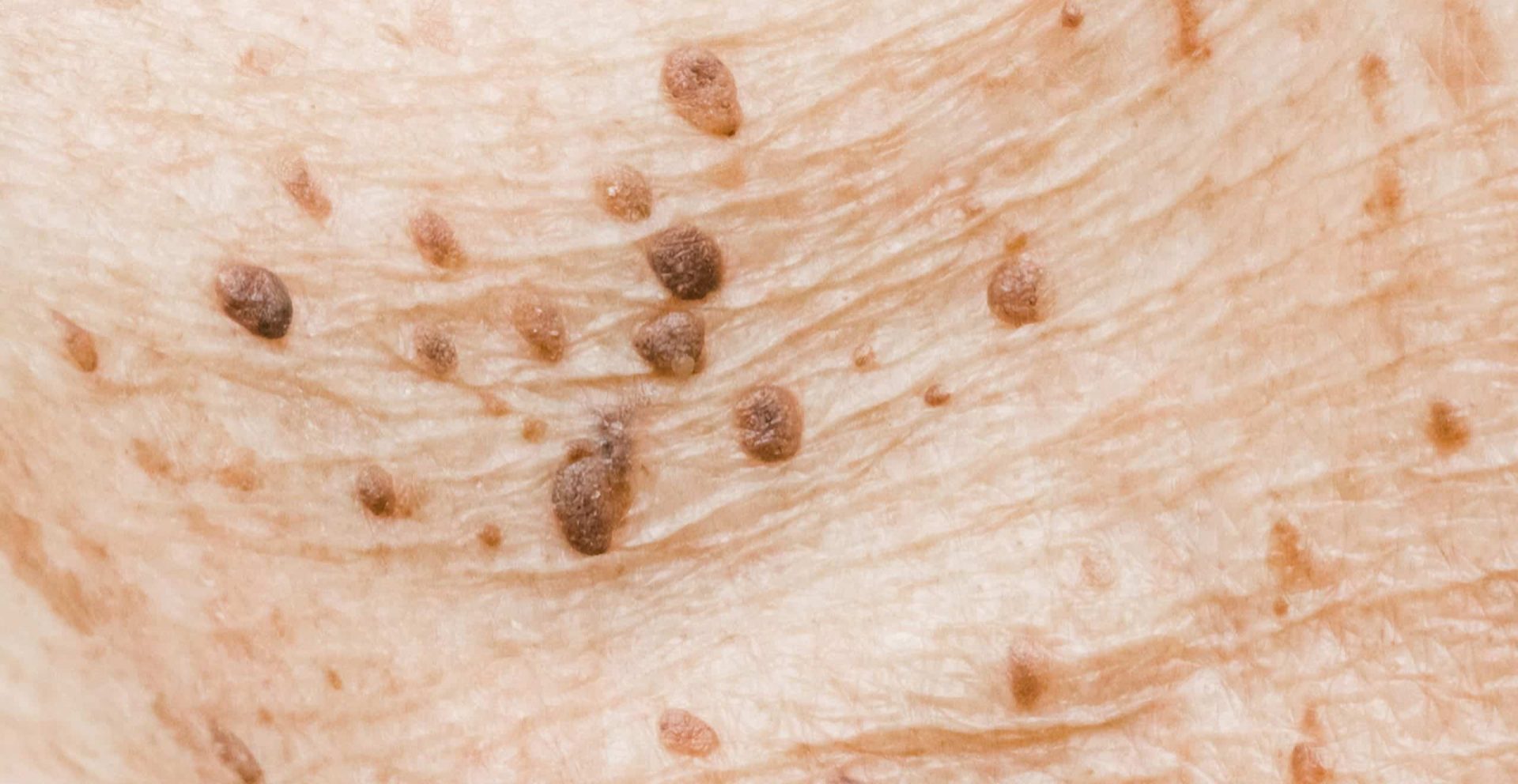
Acne scars:
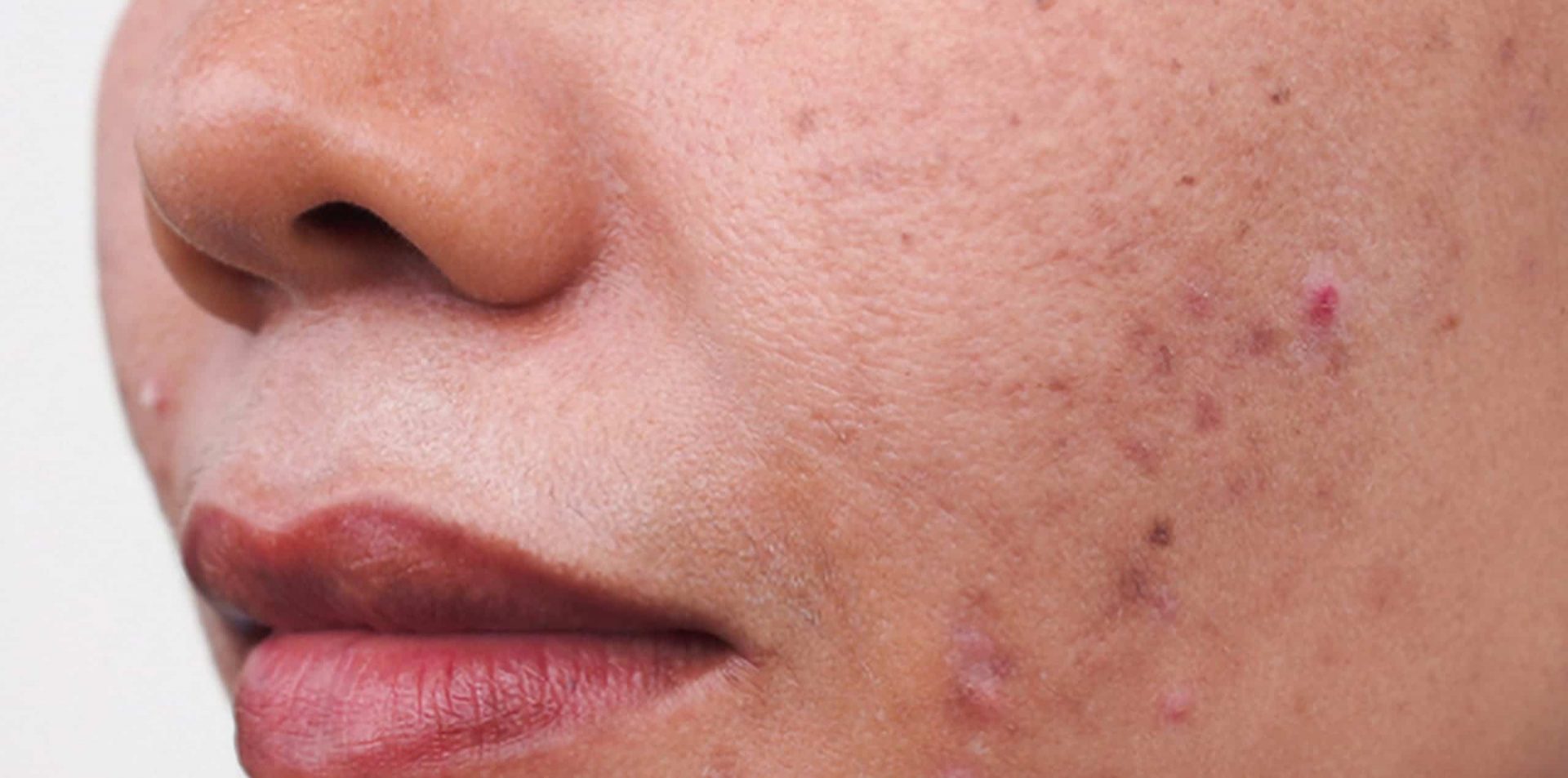
Post-inflammatory hyperpigmentation:
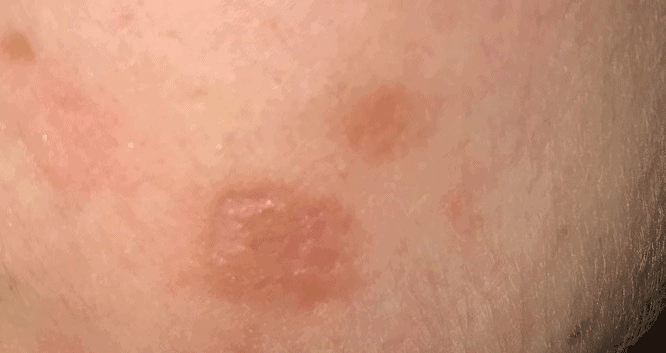
Seborrheic keratosis

Treating Pigmentation in Dream
Dream Holistic Approach In Treating Skin Pigmentation

Consultation And Examination
In the initial consultation, our medical doctors will thoroughly examine your type of pigmentation. If your skin condition has not been diagnoses yet, we will take the steps necessary to ensure an accurate diagnosis. At last, we will discuss potential treatment options with you and help you determine your priorities, budget, lifestyle and condition. Our doctors will take many lifestyle factors into account when devising the optimal therapy for your individual situation.

Planning Of Treatment Program
Having examined your skin condition carefully, A treatment program will be customised based on your skin condition, budget, lifestyle, and time schedule.

Aftercare
After your treatment program is completed, we will continuously perform regular checkups to ensure your skin is developing as expected to avoid reoccurance. This thorough aftercare greatly increases the success rate of many procedures. We will ensure your aftercare program is flexible and adapted to be least disruptive to your lifestyle.
Types Of Treatment For Pigmentation Removal
Intense Pulse Light Therapy (IPL)
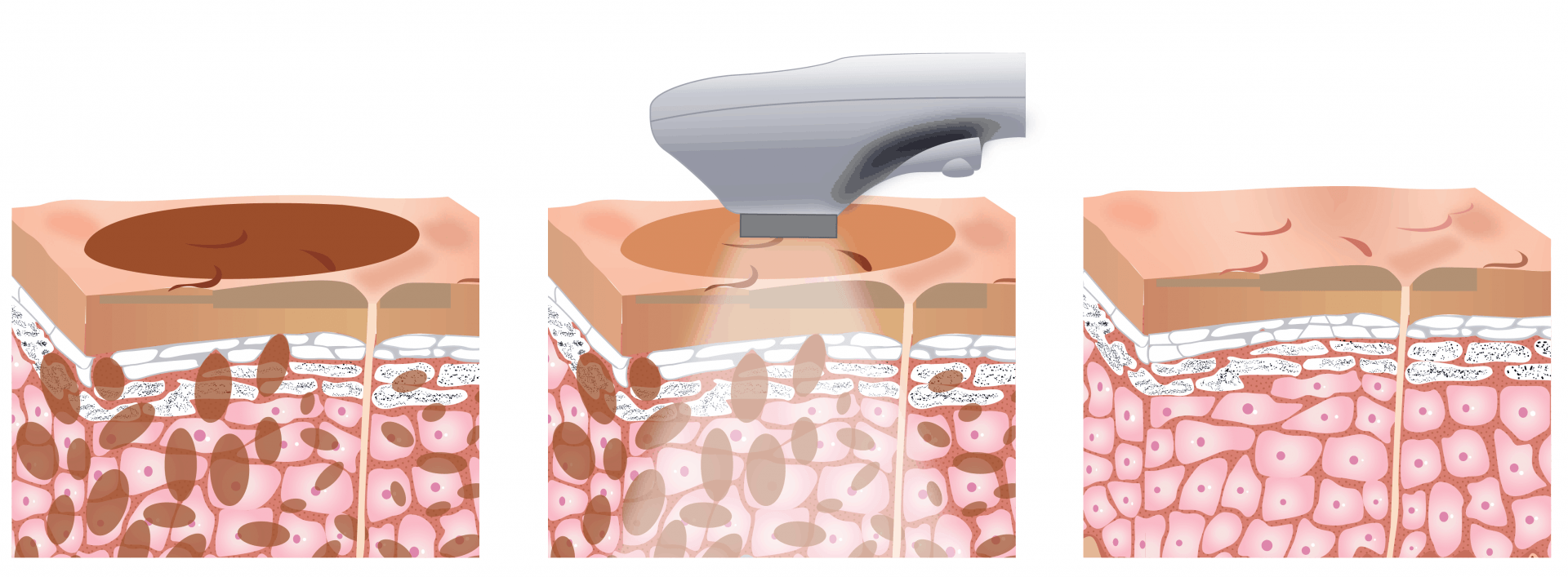
Q-switched Nd:YAG-Laser
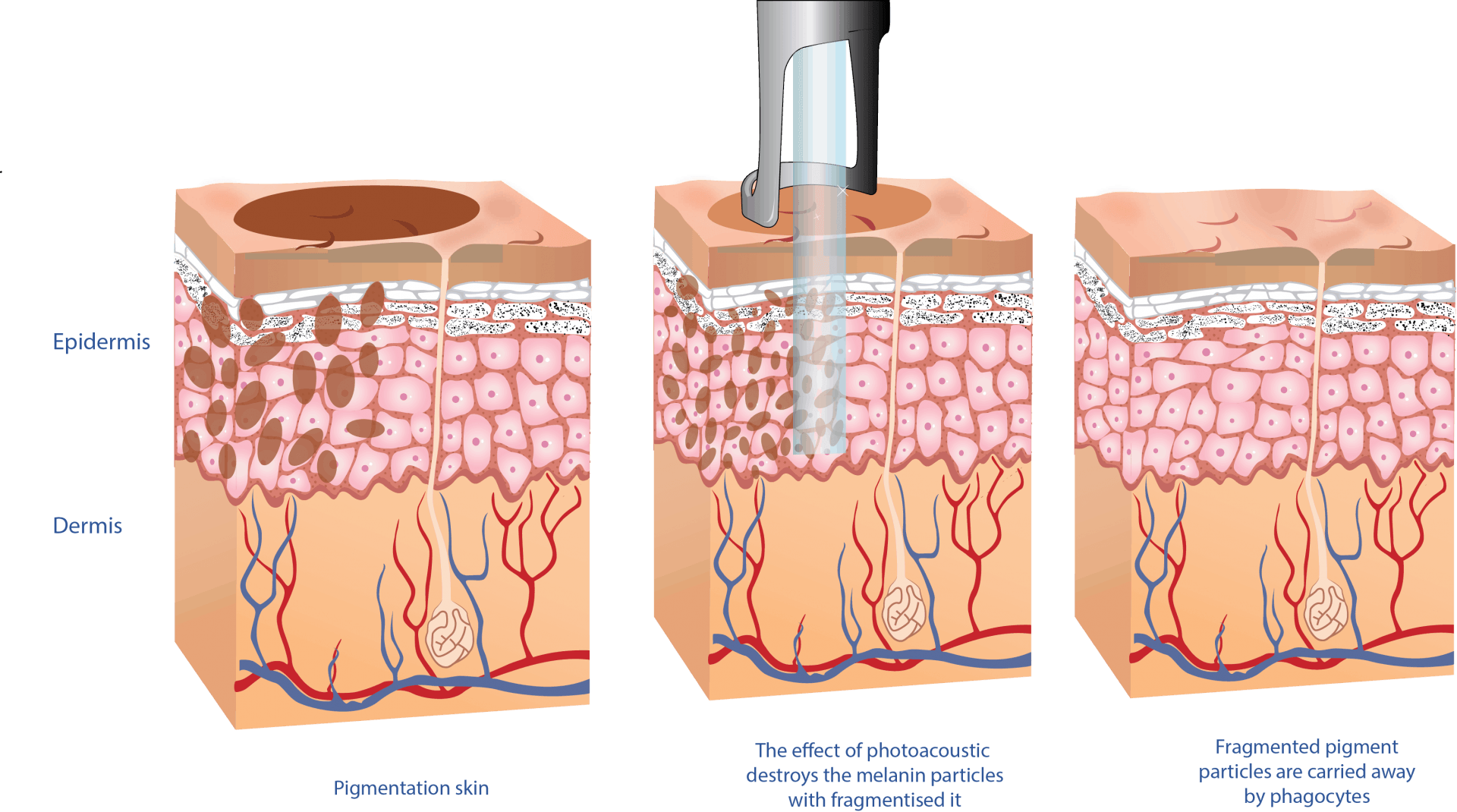
Alexandrite Laser
- Age spots
- Freckles
- Flat pigmented birthmarks
- Acquired dermal melanocytosis
- Naevus of Ota
- Black, blue and green tattoos.
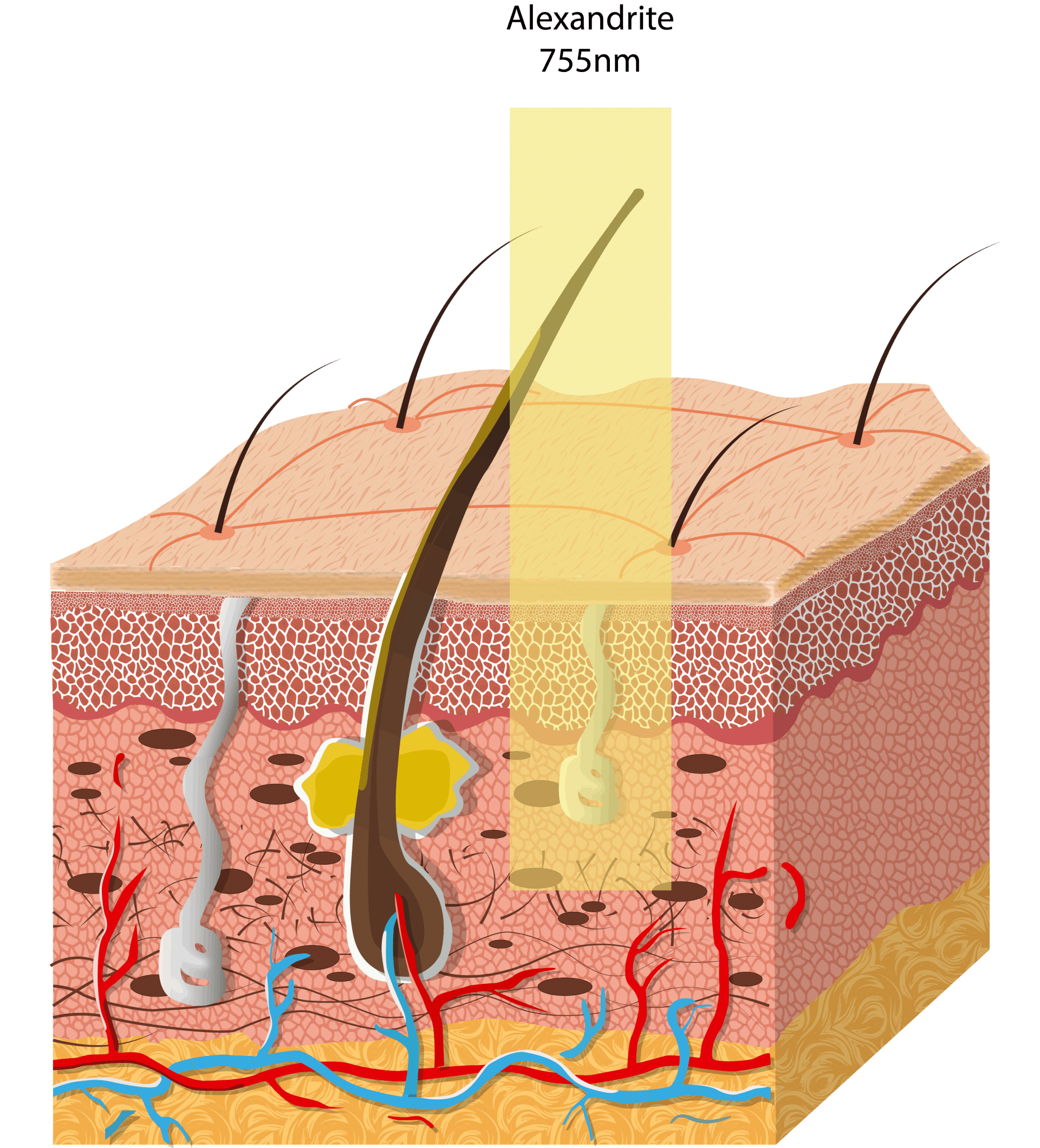
Fractional CO² Laser

Fractional laser therapy is a minimally invasive treatment option that requires a downtime of 3-7 days. The CO2 laser produces heat in the deeper dermis to stimulate collagen production. A scanner defines the exact micorscopic zones to be targeted and this is applied to a fraction of the skin at a time. It is called fractional technology, because it only targets a fraction of the pigmented skin at a time, leaving small sections of healthy tissue intact, which accelerates tissue healing. With a fractional laser, wrinkles and unwanted pigmentation such as melasma, age spots, or sun spots can be treated simultaneously. In addition, Fractional CO2 laser can be used to reduce coarse-pored skin or skin irregularities such as acne scars or stretch marks. Fractional is particularly suitable for areas such as the face, neck, cleavage, and hands.
Pico Laser
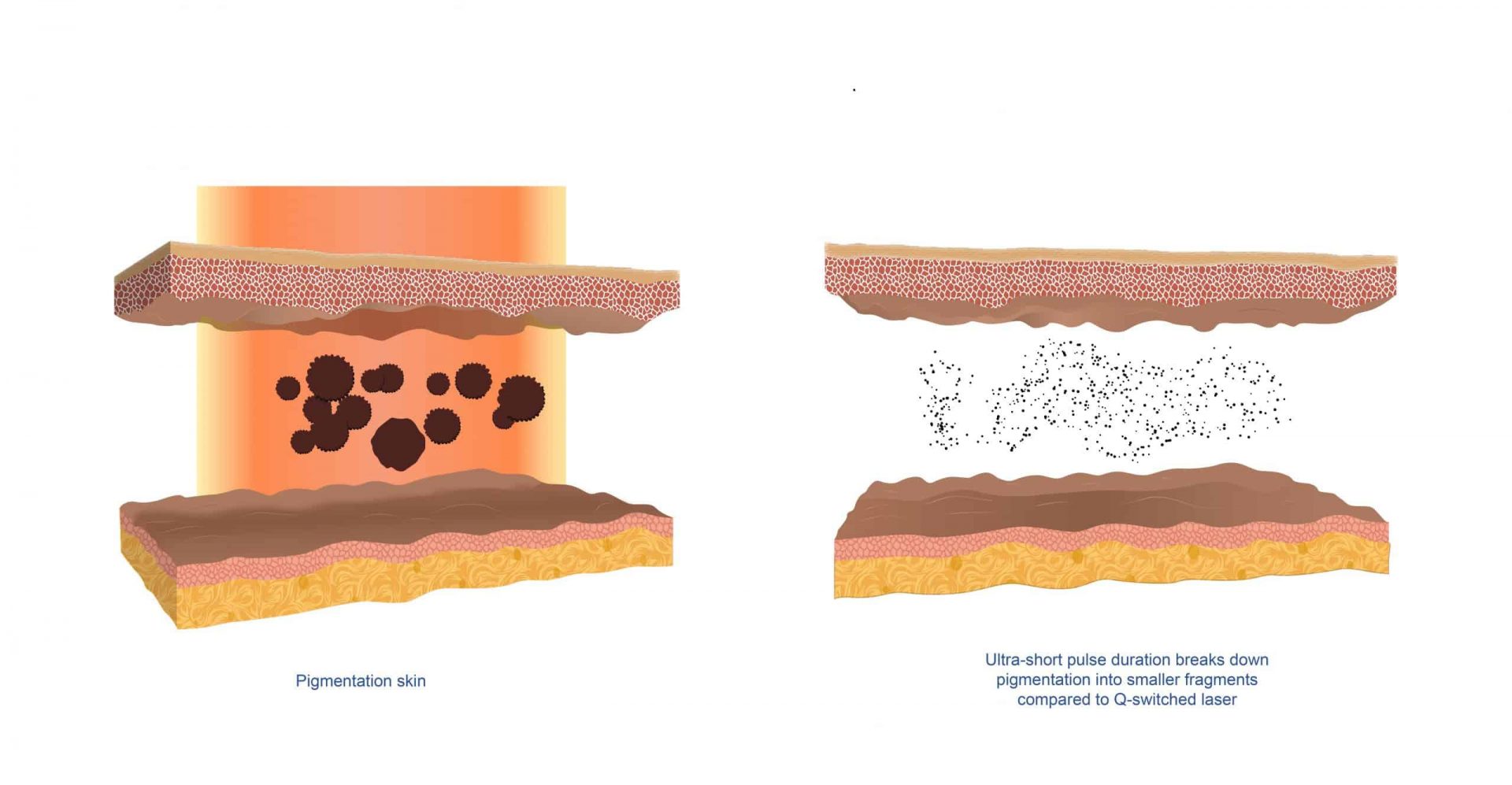
The use of Pico laser has set a new treatment standard for treating skin pigmentation, scars, and pores in Singapore. A picosecond is one-trillionth of a second which is the time it takes for one pulse of laser to penetrate your skin. It is considered an improvement compared to traditional Q-switched lasers, which send pulses in nanoseconds (one billionth of a second). Due to the laser’s ultra-short pulse duration, picosecond laser pulses can delivery more energy and fire more shots per second.
This improves the process of laser energy, breaking down pigments mechanically, enhancing the laser’s ability to break down pigments into small fragments, which will then be removed by the body’s immune system.
These pulses create micro-cavities in the area, which actively stimulates the production of collagen and elastin fibers. The amount of treatment sessions required depends on the skin condition, but sessions are relatively short compared to Q-switched lasers. The Pico Laser is a popular procedure due to the following benefits:
- Minimally invasive with only minor pain
- Little to no downtime
- Suitable for all skin types
- As a secondary effect, it also rejuvenates the skin.
Pico Laser Can Be Used To Effectively Treat:
Acne Scars
Tattoos
Wrinkles
Sunspots
Freckles
Melasma
Rosacea
Hori’s Nevus
Facial flushing
Red acne marks
Post-Inflammatory Hyperpigmentation
Additional Treatment Options
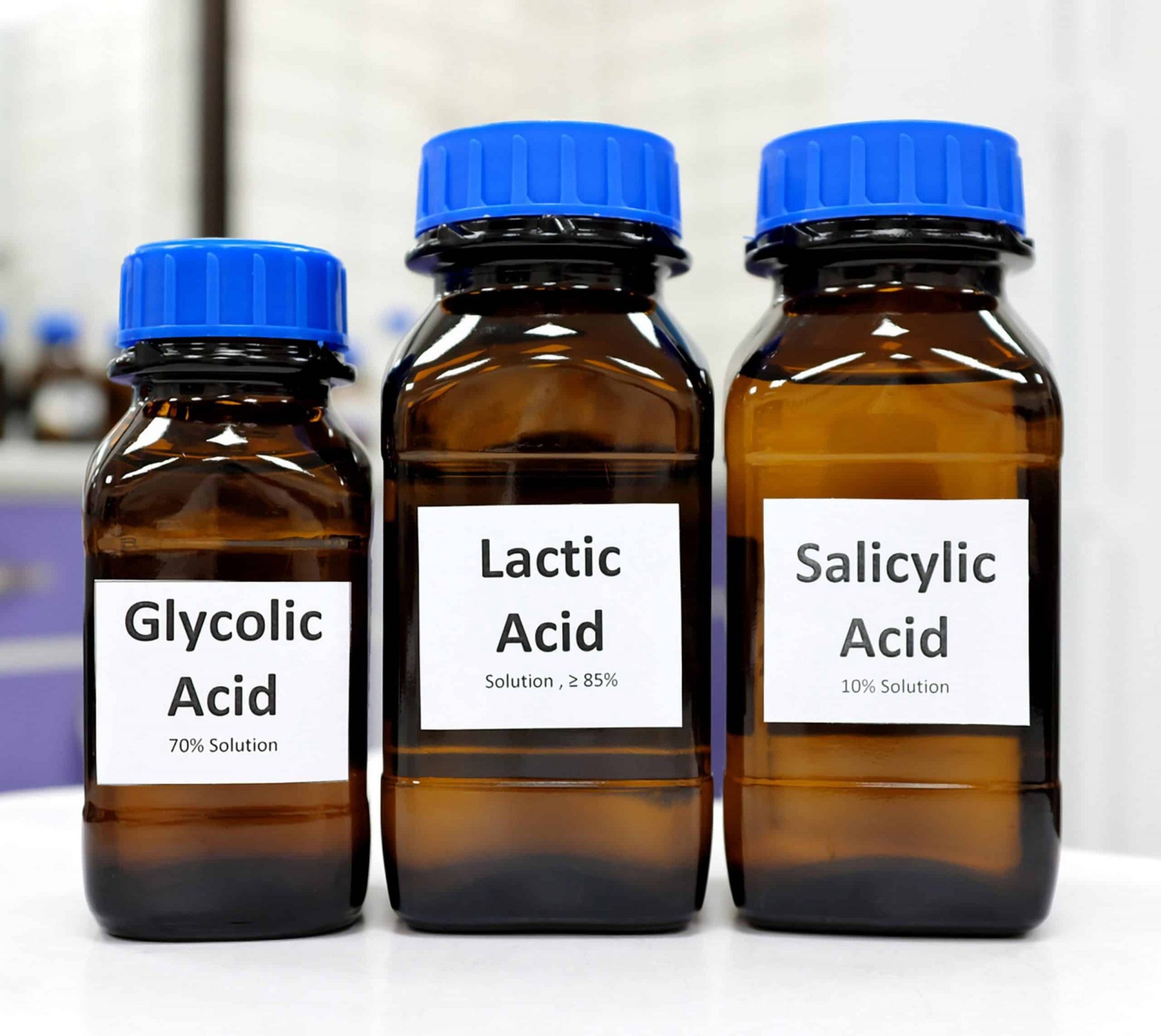
Chemical Peels
Chemical peels are a non-invasive method suitable for evening out light blemishes and uneven skin tones. Chemical peels are generally safe, if used correctly. It is crucial to understand the different types of chemical peels to make an informed decision and opt for the optimal treatment. During a chemical peel, the superficial layers of the skin are removed by chemical substances (alpha hydroxy acids (glycolic and lactic acid), beta hydroxy acids (salicylic acid), and trichloroacetic acid (TCA).
Superficial Peels
Superficial peels only penetrate only the outer layer of the skin to clear pigmentation. The peels allow for skin improvement while maintaining a low risk of complications. These peels generally require around 3 -7 days of healing time.
Medium Depth Peels
Medium depth peels clear the middle and outer layers of the skin to improve the appearance of skin discoloration. This peeling treatments can be performed repeatedly every few months to maintain the desired complexion.
Medium depth peels generally take one to two weeks to heal.
KKUM Whitening Home Skin Care Program Designed By Dream
This skincare program is ideal for people who want to lighten their pigmentation, reduce dark spots and melanin presence by integrating medical grade products into their skincare routine. Our KKUM whitening home skin care program is either used as a first line of treatment, or used post-treatment as part of the patient’s aftercare. In addition, it provides a rejuvenating effect, stabilizing the texture and tone of the skin.
This skincare program consists of the following products:
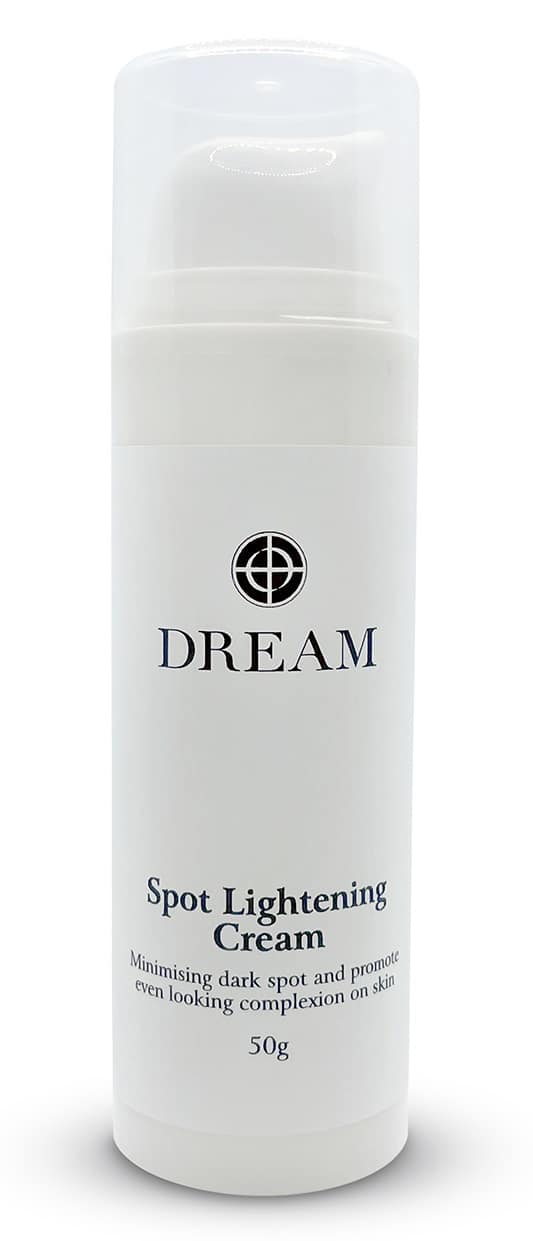
DREAM SPOT LIGHTENING CREAM
This medical-grade cream was developed to improve skin pigmentation without any in-clinic procedure. It is prescribe to correct hyperpigmentation caused by melasma, post-inflammatory hyperpigmentation and freckles, using the combination of ingredients, such as Arbutin, Glycolic acid and, most notably, Cysteamine. The latter one is a compound that is naturally present in your body and functions as a natural pigment regulator by reducing melanin. The first visible results will usually appear within 2-3 months, and the skin condition may improve continuously, thereafter.
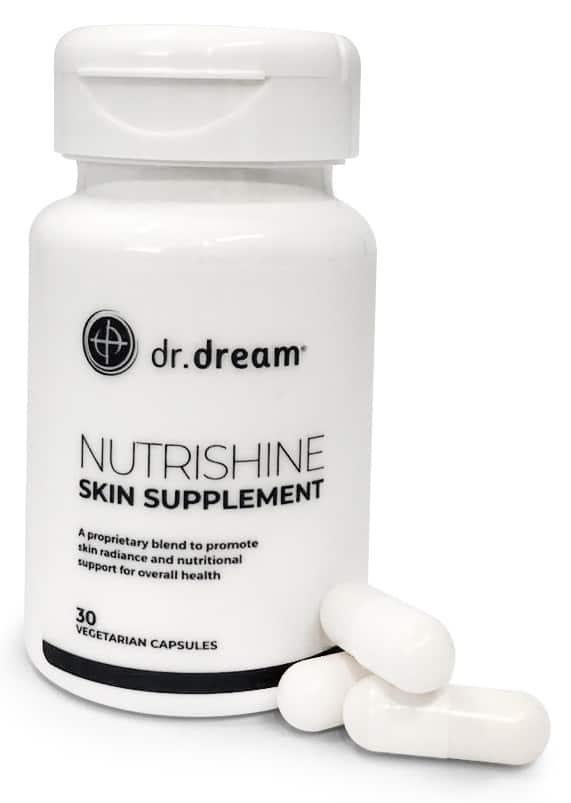
NUTRISHINE SKIN SUPPLEMENT
Nutrishine incorporates a three-stage approach to transforming the health and complexion of your skin - Enhancing Skin Radiance, Repair & Restore, and finally Strengthen.
- Enhance Skin Radiance - White Tomato and Glutathione combine to rehabilitate skin and leave it positively glowing.
- Repair and Restore - Five essential vitamins combine to provide a comprehensive nutritional boost to your skin, from stimulating healthy skin cell growth to reducing the signs of aging.
- Strengthen Skin, Hair & Nails - The impressive attributes of key B-vitamin Biotin play a crucial role in maintaining the health of your skin and allowing radiance to shine through.
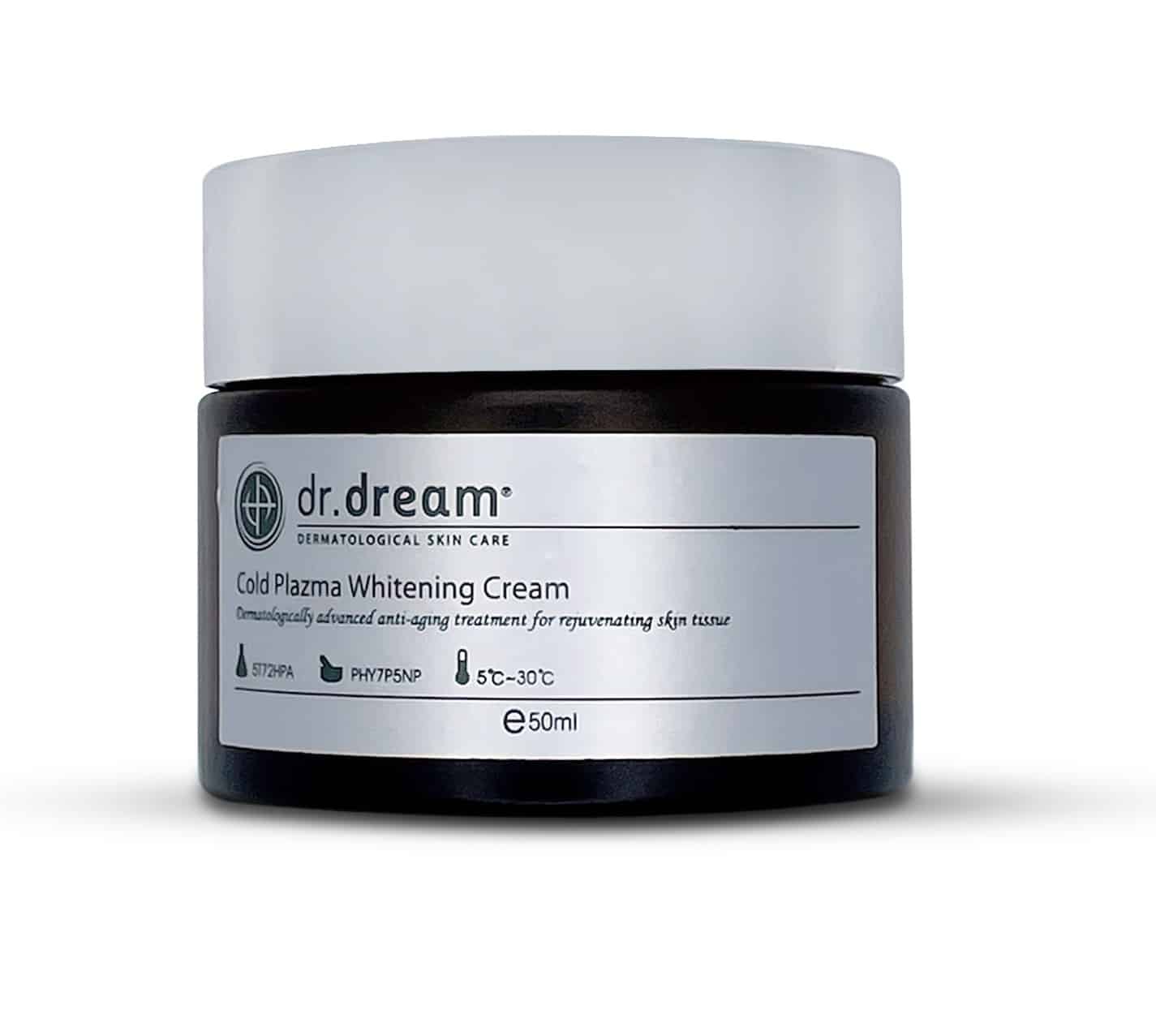
DrDream COLD PLAZMA WHITENING CREAM
DrDream COLD PLAZMA WHITENING CREAM based on galactomyces ferment filtrate (contained 80%) which is made by the two steps of ferment filtering technology provides better efficiency skin improvement in brightening combined with Cold Plazma MGF Complex 0.42mg that enhances anti-oxidative ability to the skin.
TRANEXAMIC ACID
Tranexamic Acid (short: TXA) is a prescribe medication to treat melasma by interfering and blocking the melanin production pathway in UV exposure and hormonal influences. A study demonstrated that the oral application of TXA is an effective and safe therapy for melasma. In one of the clinical studies, a significant improvement was observed in 94.6% of the test subjects, who took 250mg of TXA orally, twice a day for 6 months.
Frequently Asked Questions (FAQ) about Pigmentation Treatment
Is laser pigmentation removal suitable for me?
Generally it is suitable for most people. It is essential to get an accurate diagnosis from medical doctor and to understand the cause of your pigmentation. Only this way, we can derive at an optimal treatment plan.
Can you treat all areas of my body?
Yes, any area, including sensitive areas, can be treated effectively and safely. Most treatments focus on areas, such as the face, neck, arms, and chest.
What else should I know about the laser procedure?
- To protect your eyes, you must wear goggles during the treatment session.
- Sometimes, topical anesthetic can be applied in some in-clinic treatments.
- Avoid scrubbing or scratching the treated area 2-3 days after the laser treatment.
- Avoid the application of abrasive skin care products, such as acidic cleansers.
Are any of the aforementioned therapies painful?
The pain level in laser treatment is generally minimal or painless. The feeling during the treatment is often described as warmth or slight tingling. After the treatment, light soreness may occur, which usually disappears within a day.
Laser treatment is particularly suitable for pain-sensitive people.
How much does it cost to treat pigmentation?
In Singapore, depending on the type of laser treatment involved, each session ranges between $250 – $500 SGD. Usually, it requires repeated treatments of 4-6 weeks interval till desired result achieved.
